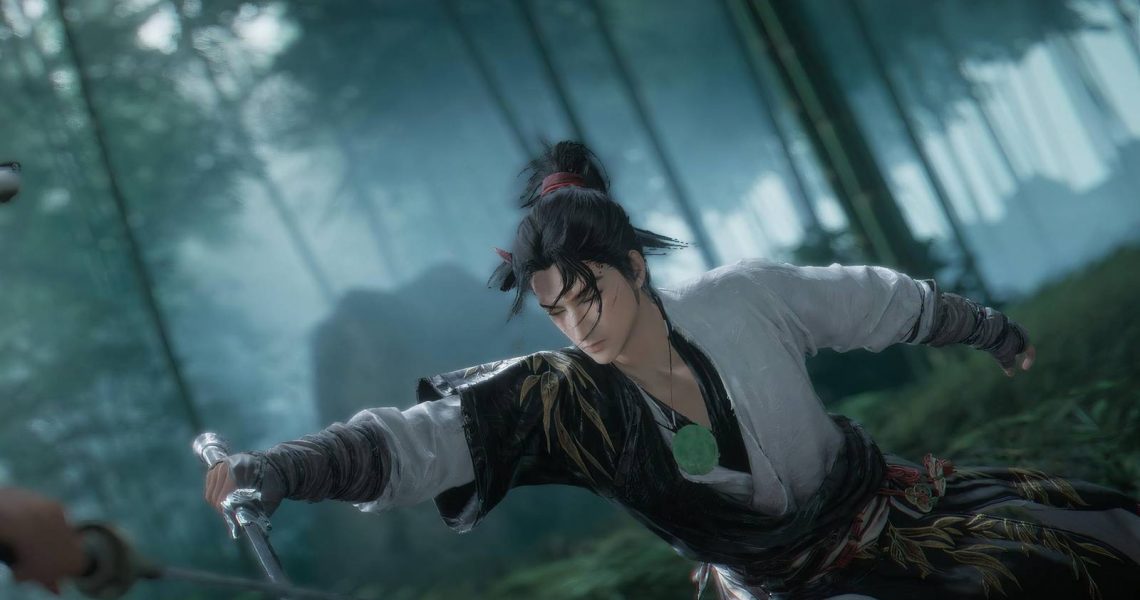Which Guidance Mode (& Difficulty) Should You Choose?
As beautifully designed as Where Winds Meet is, it gives you a lot to digest right away. Even before you’re done making your character, the game asks you to choose settings that will shape everything from how much help you get from the UI, how your camera behaves, and how challenging the early hours feel.
Choosing the right setup can make the game smoother, easier to follow, and much more enjoyable. This guide breaks down the Guidance Modes and Difficulty options so you can choose the best settings for your playthrough in Where Winds Meet.

Where Winds Meet: How to Bow (Emote)
In Where Winds Meet, players will encounter multiple areas and puzzles in the game world that require their character to perform a bow. Here’s how.
Which Guidance Mode Should You Choose in Where Winds Meet?
Where Winds Meet comes with three Guidance Modes: Detailed, Moderate, and Minimal. These settings decide how many visual aids, exploration prompts, and quest markers appear on your screen.
Detailed Guidance Mode
The Detailed Guidance mode shows full UI assistance, including quest markers, pathing hints, exploration prompts, and tutorial triggers. Early on, the game locks a surprising number of features behind simple “first-time” triggers, so having all these cues on-screen helps you avoid missing anything important. If this is your first playthrough, this is hands down the easiest and most comfortable mode to start with.
Moderate Guidance Mode
The Moderate Guidance Mode keeps the UI cleaner while still showing the most important information, like main quest markers. It’s a nice middle ground if you’re familiar with open-world games or once you’ve already learned your way around the map and NPCs. This mode is more like a “light assistance” option.
Minimal Guidance Mode
The Minimal Guidance Mode turns off nearly all UI help. It’s designed for players who already know the game layout (including resource routes, NPC locations, and hidden interactions) and can rely entirely on memory. Beginners should avoid this because it makes early unlocks and tutorial triggers easy to miss.
Which Difficulty Mode Should You Choose in Where Winds Meet?
The difficulty in Where Winds Meet does not affect rewards. You won’t get extra loot, better gear, or special achievements for playing on a harder mode.
That being said, there are five difficulty levels in Where Winds Meet:
- Story Mode: This is the easiest difficulty. Enemies are softer, and you’ll get extra reaction time thanks to slow-downs and on-screen prompts when enemies use special attacks. It’s perfect if you want to enjoy the world and story without struggling through fights.
- Recommended Mode: Recommended is the “standard” difficulty. Enemy strength feels fair and manageable. Plus, you won’t get automatic time-stops unless you adjust them in the settings. If you want a balanced experience that still feels challenging, start here.
- Expert Mode raises the challenge. Enemies hit hard, have more health, and all assist cues, like slow-motion cues or skill prompts are disabled. This mode is meant for players who enjoy skill-based, unforgiving combat.
- Legend Mode is the punishing difficulty. The game removes all assists permanently, makes enemies far tougher, and rewards you with exclusive badges for defeating bosses. If you want a Soulslike challenge, this is the mode built for you.
- Hardcore Mode features permadeath. This means that once your character dies, they’re gone for good.
Can You Change Difficulty Mode Later?
You can switch between Story, Recommended, and Expert modes at any time through the Settings. This means you’re never locked into a setting if the game becomes too easy or too hard.
However, Legend Mode is locked in permanently. You have to choose it at the start of a brand-new playthrough.

- Released
-
November 14, 2025
- ESRB
-
Teen / Use of Alcohol, Violence, In-Game Purchases (Includes Random Items), Users Interact
- Developer(s)
-
Everstone Studios
- Publisher(s)
-
NetEase, Inc.
- Engine
-
Proprietary



